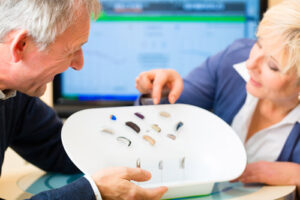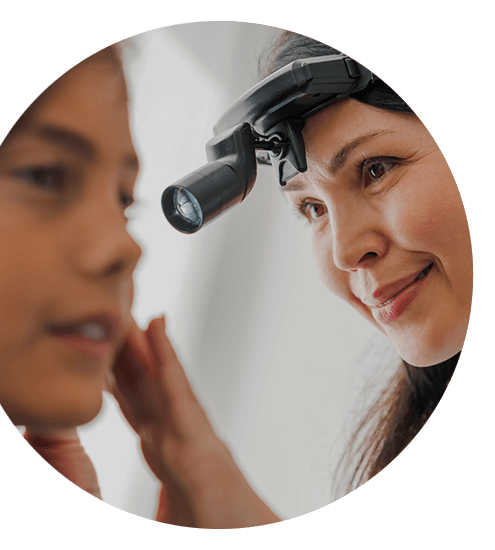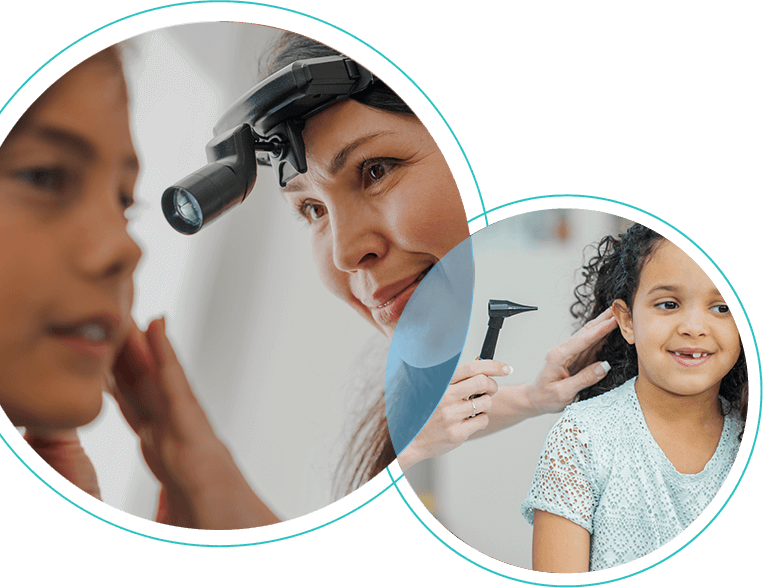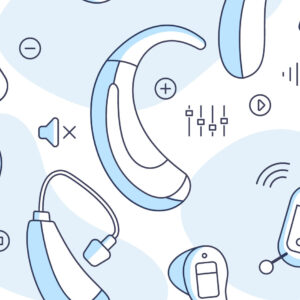Find Out Which Hearing Aid is Best for You
There are literally hundreds of hearing aid types and styles on the market. Today you have your choice of almost invisible, comfortable, discreet and high fidelity hearing aids. With the appropriate hearing aid and treatment plan, your life can be transformed. With the wrong one, your hearing could get worse.
Your options include the traditional behind the ear to custom devices made specifically for your ears. You can get hearing aids that you just put in and never have to adjust to hearing aids that wirelessly connect to your TV or your smartphone.
How to Choose a Hearing Aid
At Best Hearing, we can help you choose the one that is right for your hearing needs and your lifestyle. We are hearing experts and can fit, adjust and program your hearing aids so you get the best hearing possible.
Discover the discreet, comfortable and powerful digital or wireless hearing aid that will work for you. Call to schedule a visit to get your hearing tested and to talk about which hearing solution is right for you.
How Hearing Aids Work
Hearing aids use small microphones to collect sounds and a computer chip that converts the incoming sound, analyzes it and adjusts the sound based on your hearing loss. Then you hear the audio signals through miniature speakers in your ears.
Which hearing aid is right for you? It depends on the severity of your hearing loss, where you want to hear better, how active you want to be and which technology you are comfortable with.
The Truth About Hearing Aids
Realistic Expectations
Hearing aids work extremely well when they are fit and adjusted appropriately. All hearing aids should be comfortable with respect to the physical fit and the sound loudness. If there is any discomfort the wearer should return to their audiologist immediately for alterations to provide a comfortable fit. Hearing aids can dramatically improve hearing, they do not provide “perfect” hearing.
Getting Used to Hearing Aids
Some people need a few days to adjust to their new hearing aids, but most take a few weeks. There are some who require several months to make the adjustment. In general, the greater the hearing loss and the longer the hearing loss has been present, the more difficult the transition to using hearing aids can be. There is no perfect way to learn how to adjust to hearing aids. Audiologists are trained to provide rehabilitative services that should occur after the hearing aids have been fit.
Background Noise
Virtually everyone, hearing aid users and non-hearing aid users complain about background noise at one time or another. There is no way for a hearing aid to eliminate the sounds that the wearer does not want to hear. The good news is that there are now hearing aids available that amplify the sounds you do want to hear and minimize some unwanted sounds.
There is a great deal of research that reveals dual microphones effectively reduce background noise for many people with certain types of hearing loss. Your Audiologist can help you determine the best circuits and microphone options for your hearing loss and communication needs.
The best and most efficient way to reduce background noise is through the use of assistive listening devices such as FM technology. Ask an Audiologist how this technology can work with your hearing aids to improve your ability to hear in difficult listening situations.
One Hearing Aid vs. Two Hearing Aids
You have two ears because you need two ears. If you have hearing loss in each ear that could be reduced by hearing aids, you should wear two hearing aids. Wearing hearing aids in both ears will improve your ability to hear in noisy settings, allow you to localize sounds in your environment, improve the ability to understand speech, even from a distance and give sound a fuller quality.
Fact: Over 60% of individuals who wear hearing aids are fit in both ears. The benefits of wearing two hearing aids are enhanced ability to (a) hear better in the presence of background noise, (b) determine where sound is coming from, and (c) hear soft sounds at lower levels.
Which Hearing Aid is Right for You?
At the time of your hearing evaluation, a case history will be taken to determine the type of hearing problems you may have. Questions will also be asked about the onset of the hearing loss, presence of tinnitus (ringing in the ears) and dizziness. Based on the results of the hearing test and the answers to these questions, our highly trained hearing experts may make a referral to a medical doctor for an examination and possible treatment. If the testing reveals that no medical treatment is needed, then hearing aids may be recommended.
Hearing Aid Evaluation
There are literally thousands of hearing aids from which to choose. Our highly trained staff will use the information that was provided in the case history and in the audiological evaluation to help narrow those choices for you.The final decision on which hearing aid is purchased is the choice of the wearer.
Hearing Aid Fitting
During the hearing aid fitting the device is programmed to meet the needs of the wearer. The new wearer is provided with instructions regarding how to put the hearing aid in the ear and remove it, how to change batteries and how to care for and clean the device. This is also the time that the Audiologist reiterates the function of the hearing aid as it relates to the individual’s life style.







